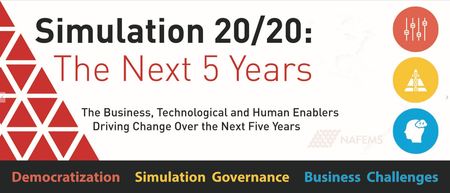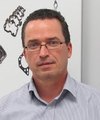
Speakers
Dr. Alexander Karl, Rolls-Royce
Associate Fellow – Robust Design and Systems Engineering
Alexander holds a PhD and MSc in Aerospace technology from the University of Stuttgart in Germany. He has 15+ years of work experience with Rolls-Royce. During this period, Alexander was working in several major sites and sectors (Dahlewitz, Derby and Indianapolis). Alexander’s background is thermo-mechanical analysis but for the last 12+ years Alexander is working actively in the area of multi-disciplinary optimization, Robust Design (Design for Six Sigma) and Systems Engineering. He is also an active member of NAFEMS and ERCOFTAC, promoting a wider application of these methods, processes and tools.
Current position / Tasks
His main focus is the application of tools, methods and processes to real engineering challenges. His current focus within Rolls-Royce is the global pervasive implementation of Robust Design and Systems Engineering within the company.
Mr. Frank Popielas, SMS_ThinkTank™
Managing Partner, SMS_ThinkTank™ & Executive Consultant, CIMdata
 Mr. Popielas is currently Managing Partner of SMS_ThinkTank™ and Executive Consultant for CIMdata. He has over 20 years of global experience in engineering and R&D product and materials development, as well as testing, with a specific focus on the development and application of simulation tools, and the establishment of the required supporting infrastructure at Dana Holding Corporation. His responsibilities span application engineer supporting European customers, R&D Project Manager for one of the major product lines Multi-Layer Steel (MLS) gaskets, IP management lead for this product line, technology transfer and exchange with cooperation partners (focus on Russia), establishing, developing and expanding CAE capabilities on divisional and corporate level. This is supported by over 35 granted patents globally on the areas of sealing, shielding and fuel cells, over 30 publications globally covering all the mentioned areas with the main focus on the past decade on virtual engineering, its tools and practices, presentations and speaking engagements at conferences, and companies beyond Dana, interviews, case studies, teaching engagements at high schools and community colleges.
Mr. Popielas is currently Managing Partner of SMS_ThinkTank™ and Executive Consultant for CIMdata. He has over 20 years of global experience in engineering and R&D product and materials development, as well as testing, with a specific focus on the development and application of simulation tools, and the establishment of the required supporting infrastructure at Dana Holding Corporation. His responsibilities span application engineer supporting European customers, R&D Project Manager for one of the major product lines Multi-Layer Steel (MLS) gaskets, IP management lead for this product line, technology transfer and exchange with cooperation partners (focus on Russia), establishing, developing and expanding CAE capabilities on divisional and corporate level. This is supported by over 35 granted patents globally on the areas of sealing, shielding and fuel cells, over 30 publications globally covering all the mentioned areas with the main focus on the past decade on virtual engineering, its tools and practices, presentations and speaking engagements at conferences, and companies beyond Dana, interviews, case studies, teaching engagements at high schools and community colleges.
The focus on CAE moved Mr. Popielas in 1999 from Germany to the USA where he founded the Advanced Engineering Department to accelerate the implementation of CAE in North America and make it a global practice for the Power Technology Division. In order to be able create the proper infrastructure for CAE on the long run, utilizing synergies between business units and creating cost benefits Frank founded in 2003 the Dana CAE Council. This allowed the standardization of software suites among the business units, creating foundational practices independent of the product, coordination of development activities, and the implementation if a global HPC infrastructure, which meanwhile went through several hardware generations.Based on the development activities and the need for more upfront predictive capabilities lead to a much more structured processes in engineering utilizing the virtual approach. This naturally resulted in the requirement for CAE democratization, thus becoming one of the thought leaders in SPDM. Through continues engagement with customers and other companies Frank became member of the NAFEMS Americas Steering committee in 2011 helping this process further, even beyond Dana.
The next logical step was to go beyond the products and sub-assemblies towards systems. There he became in 2013 the founding chairman of the System Modeling and Simulation Working Group (SMSWG), a joint WG between NAFEMS and INCOSE. At the same time, he elevated the Dana CAE Council to the next level – the SMS Council, incorporating for example also systems related areas, like software development, digital manufacturing, among others, as well as further pushing standards to foster democratization and communication between areas. This included technologies, like FMI. On the infrastructure side, the development included Cloud computing and virtual desktop infrastructure. This incorporated the development of a long-term SMS roadmap, conduction for that a companywide assessment in those areas based on CMMI.
Mr. Popielas was born in Germany, and received his MSc degree in Engineering, majoring in Theoretical Physics from the Technological University (MIS&A – Institute for Steels and Alloys) in Moscow, Russia. Frank is fluent in English, German and Russian.


 Mr. Popielas is currently Managing Partner of SMS_ThinkTank™ and Executive Consultant for CIMdata. He has over 20 years of global experience in engineering and R&D product and materials development, as well as testing, with a specific focus on the development and application of simulation tools, and the establishment of the required supporting infrastructure at Dana Holding Corporation. His responsibilities span application engineer supporting European customers, R&D Project Manager for one of the major product lines Multi-Layer Steel (MLS) gaskets, IP management lead for this product line, technology transfer and exchange with cooperation partners (focus on Russia), establishing, developing and expanding CAE capabilities on divisional and corporate level. This is supported by over 35 granted patents globally on the areas of sealing, shielding and fuel cells, over 30 publications globally covering all the mentioned areas with the main focus on the past decade on virtual engineering, its tools and practices, presentations and speaking engagements at conferences, and companies beyond Dana, interviews, case studies, teaching engagements at high schools and community colleges.
Mr. Popielas is currently Managing Partner of SMS_ThinkTank™ and Executive Consultant for CIMdata. He has over 20 years of global experience in engineering and R&D product and materials development, as well as testing, with a specific focus on the development and application of simulation tools, and the establishment of the required supporting infrastructure at Dana Holding Corporation. His responsibilities span application engineer supporting European customers, R&D Project Manager for one of the major product lines Multi-Layer Steel (MLS) gaskets, IP management lead for this product line, technology transfer and exchange with cooperation partners (focus on Russia), establishing, developing and expanding CAE capabilities on divisional and corporate level. This is supported by over 35 granted patents globally on the areas of sealing, shielding and fuel cells, over 30 publications globally covering all the mentioned areas with the main focus on the past decade on virtual engineering, its tools and practices, presentations and speaking engagements at conferences, and companies beyond Dana, interviews, case studies, teaching engagements at high schools and community colleges.
